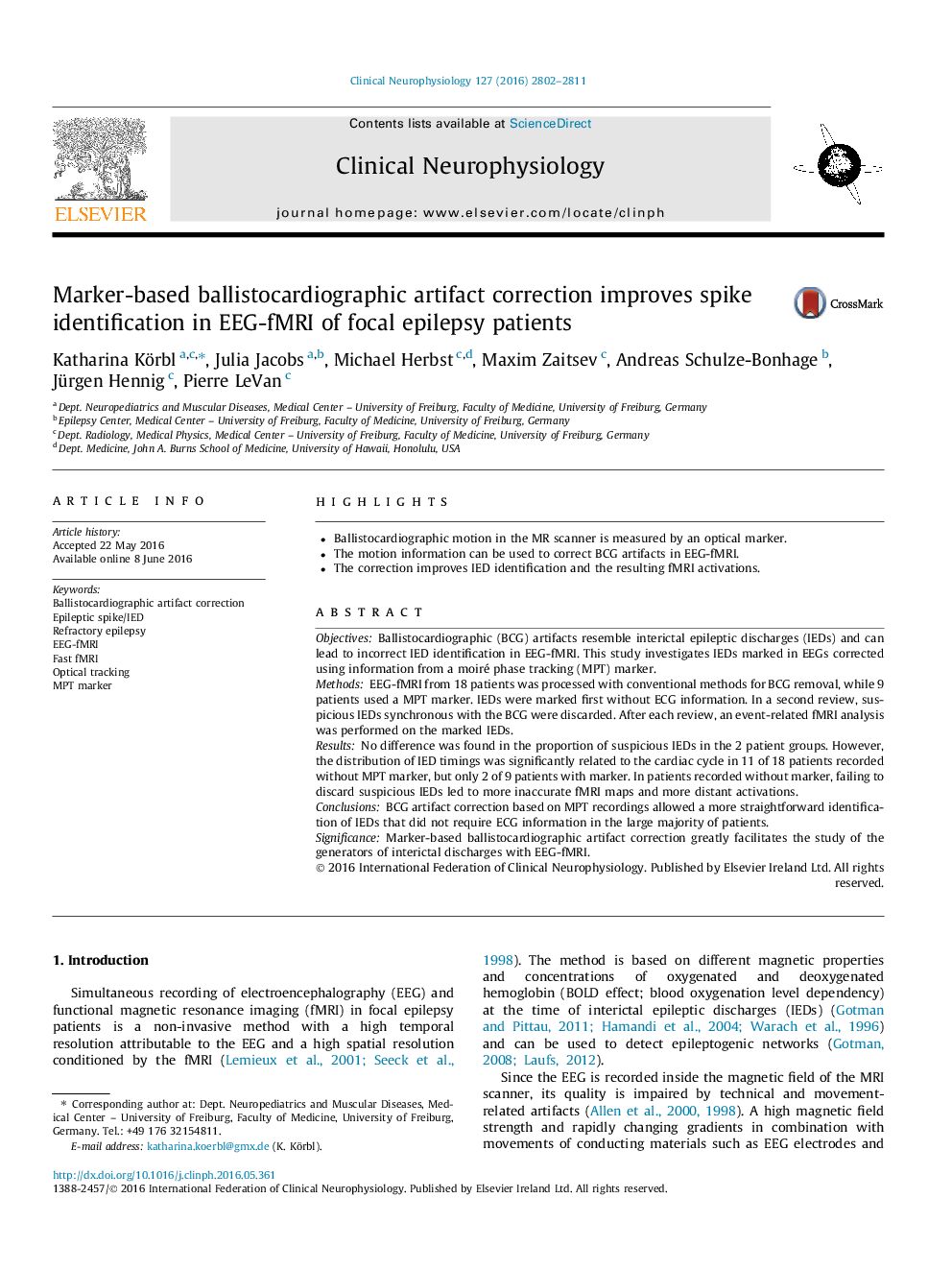| Article ID | Journal | Published Year | Pages | File Type |
|---|---|---|---|---|
| 3042655 | Clinical Neurophysiology | 2016 | 10 Pages |
•Ballistocardiographic motion in the MR scanner is measured by an optical marker.•The motion information can be used to correct BCG artifacts in EEG-fMRI.•The correction improves IED identification and the resulting fMRI activations.
ObjectivesBallistocardiographic (BCG) artifacts resemble interictal epileptic discharges (IEDs) and can lead to incorrect IED identification in EEG-fMRI. This study investigates IEDs marked in EEGs corrected using information from a moiré phase tracking (MPT) marker.MethodsEEG-fMRI from 18 patients was processed with conventional methods for BCG removal, while 9 patients used a MPT marker. IEDs were marked first without ECG information. In a second review, suspicious IEDs synchronous with the BCG were discarded. After each review, an event-related fMRI analysis was performed on the marked IEDs.ResultsNo difference was found in the proportion of suspicious IEDs in the 2 patient groups. However, the distribution of IED timings was significantly related to the cardiac cycle in 11 of 18 patients recorded without MPT marker, but only 2 of 9 patients with marker. In patients recorded without marker, failing to discard suspicious IEDs led to more inaccurate fMRI maps and more distant activations.ConclusionsBCG artifact correction based on MPT recordings allowed a more straightforward identification of IEDs that did not require ECG information in the large majority of patients.SignificanceMarker-based ballistocardiographic artifact correction greatly facilitates the study of the generators of interictal discharges with EEG-fMRI.
